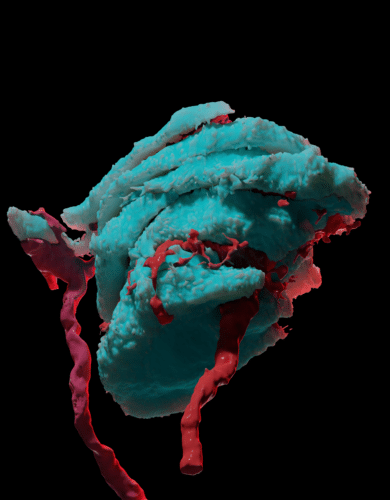Our bodies sense different touches through mechanoreceptors in the skin. Yury Nikolaev, Luke Ziolkowski, and colleagues from Yale University studied Meissner’s corpuscles in ducks to understand touch better. They found a new way for these receptors to work, involving two cells instead of one.
In vertebrates, touch is felt by small structures called mechanosensory corpuscles in the skin. These corpuscles have sensory neurons and supportive glial cells. When stimulated, sensory neurons send electrical signals to the brain, signaling touch sensations. Meissner’s corpuscles, a type of these structures, are particularly sensitive to gentle touch and low-frequency vibrations. They contain sensory neurons and a variety of glial cells called lamellar cells.
Researchers used a new microscope method, FIB-SEM, and machine learning to study Meissner’s corpuscles in mallard ducks. They discovered a surprising structure.
Nikolaev said, “We are the first to reveal the structure of any corpuscle using this technique.”
The corpuscle has lamellar cells stacked with sensory neurons. Typically, only sensory neurons sense touch, but Nikolaev’s earlier research showed that lamellar cells also respond to touch. This made researchers wonder if lamellar cells could activate sensory neurons as additional touch sensors.
Ziolkowki said, “There was some prior evidence from other nerve endings where there were occasionally non-neuronal cells that were detecting touch and helping communicate that to the sensory neuron.”

When researchers stimulated lamellar cells, they found sensory neurons also activated. Unlike direct stimulation of neurons, which produces consistent action potentials, lamellar cell stimulation results in varied firing times. This suggests that lamellar cells play a unique role in touch sensing, potentially enhancing sensitivity and specificity.
While studied in ducks, Meissner corpuscles are similar in mammals, suggesting humans may have a similar system. Nikolaev and Ziolkowski will continue investigating this bicellular system, challenging the idea of a simpler, single-cell model for touch detection and deepening our understanding of tactile perception.
In conclusion, this study reveals a new way our bodies sense touch through the interaction of sensory neurons and lamellar cells in Meissner’s corpuscles. While this was observed in ducks, it’s likely similar in humans and other mammals. This challenges the idea that touch detection is solely the job of sensory neurons.
